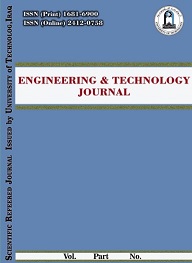Abstract
The step-up converters are widespread use in many applications, including
powered vehicles, photovoltaic systems, continuous power supplies, and fuel cell
systems. The reliability, quality, maintainability, and reduction in size are the
important requirements in the energy conversion process. Interleaving method is
one of advisable solution for heavy-performance applications, its harmonious in
circuit design by paralleling two or more identical converters. This paper
investigates the comparison performance of a two-phase interleaved boost
converter with the traditional boost converter. The investigation of validation
performance was introduced through steady-state analysis and operation. The
operation modes and mathematical analysis are presented. The interleaved boost
converter improves low-voltage stress across the switches, low-input current
ripple also improving the efficiency compared with a traditional boost converter.
To validate the performance in terms of input and output ripple and values, the
two converters were tested using MATLAB/SIMULINK. The results supported the
mathematical analysis. The cancelation of ripple in input and output voltage is
significantly detected. The ripple amplitude is reducing in IBC comparing with a
traditional boost converter, and the ripple frequency is doubled. This tends to
reduce output filter losses, and size.
powered vehicles, photovoltaic systems, continuous power supplies, and fuel cell
systems. The reliability, quality, maintainability, and reduction in size are the
important requirements in the energy conversion process. Interleaving method is
one of advisable solution for heavy-performance applications, its harmonious in
circuit design by paralleling two or more identical converters. This paper
investigates the comparison performance of a two-phase interleaved boost
converter with the traditional boost converter. The investigation of validation
performance was introduced through steady-state analysis and operation. The
operation modes and mathematical analysis are presented. The interleaved boost
converter improves low-voltage stress across the switches, low-input current
ripple also improving the efficiency compared with a traditional boost converter.
To validate the performance in terms of input and output ripple and values, the
two converters were tested using MATLAB/SIMULINK. The results supported the
mathematical analysis. The cancelation of ripple in input and output voltage is
significantly detected. The ripple amplitude is reducing in IBC comparing with a
traditional boost converter, and the ripple frequency is doubled. This tends to
reduce output filter losses, and size.
Keywords
boost converter
Continuous Current Mode
Input Current ripple
Interleaved boost converter
MPPT
Output Voltage ripple
